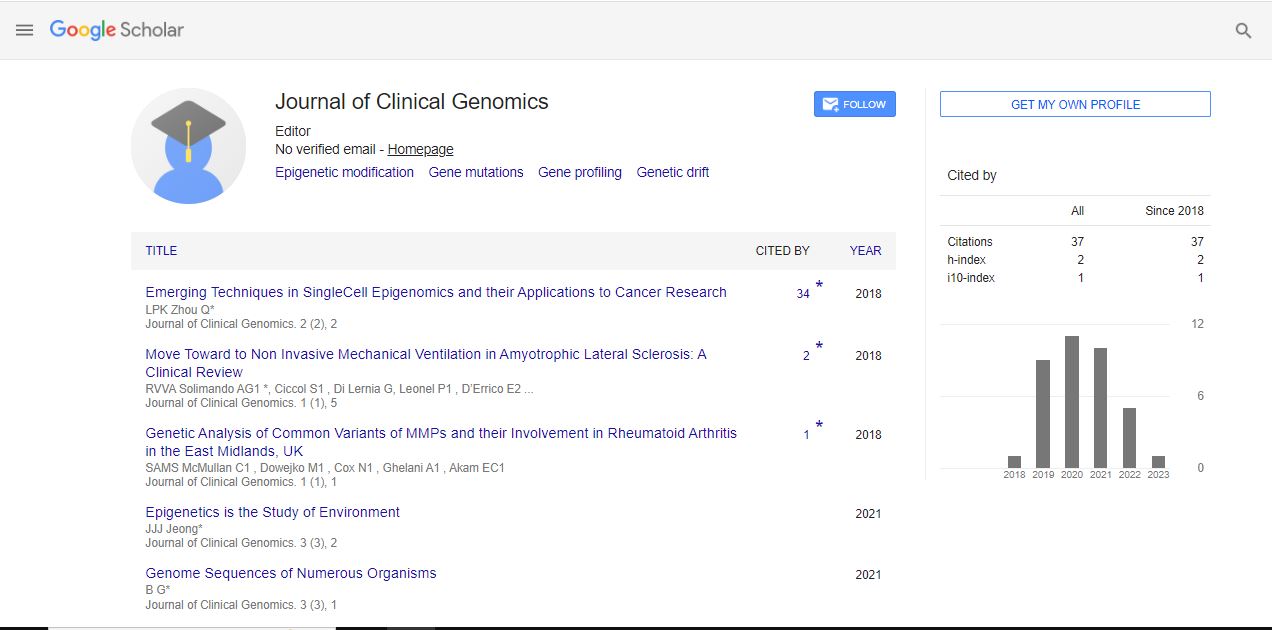Commentary, J Chromatography Res Vol: 6 Issue: 1
An Overview of Advancements in High Performance Liquid Chromatography Techniques
Caroline Williamsson*
1Department of BioChemistry, Lund University, Lund, Sweden
*Corresponding Author: Caroline Williamsson
Department of BioChemistry, Lund
University, Lund, Sweden
E-mail: caroline@willi.se
Received date: 14 February, 2023, Manuscript No. JCGR-23-95898;
Editor assigned date: 20 February, 2023, PreQC No. JCGR-23-95898 (PQ);
Reviewed date: 10 March, 2023, QC No. JCGR-23-95898;
Revised date: 28 March, 2022, Manuscript No JCGR-23-95898 (R);
Published date: 07 April, 2023, DOI: 10.4172/jcgr.1000050.
Citation: Williamsson C (2023) An Overview of Advancements in High Performance Liquid Chromatography Techniques. J Chromatography Res 6:1.
Keywords: High Performance Liquid Chromatography
Description
High Performance Liquid Chromatography (HPLC) is an analytical technique that has revolutionized the field of chemistry, pharmaceuticals, and biotechnology. It is a powerful tool that is used to separate, identify, and quantify chemical compounds in a sample. Over the years, HPLC has undergone significant advancements that have improved its accuracy, sensitivity, and efficiency. One of the major advancements in HPLC is the development of new stationary phases. The stationary phase is the material used to coat the column of HPLC, and its properties determine the separation of analytes. The introduction of new stationary phases has greatly improved the resolution and sensitivity of HPLC. Silica-based stationary phases coated with various functional groups such as C18, C8, and C4 have allowed the separation of complex mixtures of analytes with high efficiency. These functional groups interact with the analytes in the sample to produce a separation based on polarity and hydrophobicity. Furthermore, the introduction of new stationary phases such as hybrid silica, organic polymer, and zirconia have improved the selectivity and specificity of HPLC.
Another major advancement in HPLC is the use of Ultra-High Performance Liquid Chromatography (UHPLC). UHPLC utilizes smaller particle size stationary phases and higher pressure systems, which results in a faster and more efficient separation of analytes. It is especially useful when analyzing complex mixtures or trace-level analytes, as it offers higher sensitivity and resolution compared to traditional HPLC. It can be used for a wide range of applications such as pharmaceuticals, environmental monitoring, food and beverage analysis, and biotechnology. In addition to stationary phase and system improvements, HPLC has seen significant advancements in detection techniques. The introduction of Mass Spectrometry (MS) as a detection method in HPLC has greatly enhanced the identification and quantification of analytes. MS offers high sensitivity, selectivity, and specificity, allowing for the detection of trace-level analytes and the identification of unknown compounds. MS can be used for a wide range of applications such as proteomics, metabolomics, and environmental analysis. Furthermore, the development of tandem mass spectrometry has improved the sensitivity and specificity of MS, allowing for the detection of even lower levels of analytes. The development of two-dimensional chromatography has provided even higher resolution and peak capacity in HPLC. Two-dimensional chromatography involves the use of two separation mechanisms, such as reversed-phase chromatography and ion-exchange chromatography, in a single analysis. This technique can separate complex mixtures with high efficiency and selectivity, and is particularly useful in the analysis of biologics and complex matrices. Two-dimensional chromatography can be used for a wide range of applications such as protein purification, drug discovery, and metabolomics.
Lastly, the integration of HPLC with other analytical techniques, such as Nuclear Magnetic Resonance (NMR) spectroscopy and Infrared (IR) spectroscopy, has enabled the identification and characterization of analytes with higher accuracy and precision. This integration allows for the identification of unknown compounds and the determination of their chemical structure. The combination of HPLC with NMR and IR spectroscopy can be used for a wide range of applications such as drug discovery, metabolomics, and food and beverage analysis. The developments in stationary phases, systems, detection techniques, two-dimensional chromatography, and integration with other techniques have all contributed to the increased sensitivity, resolution, and efficiency of HPLC.
 Spanish
Spanish  Chinese
Chinese  Russian
Russian  German
German  French
French  Japanese
Japanese  Portuguese
Portuguese  Hindi
Hindi 